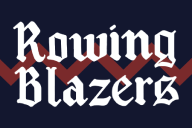
Eloise Moran is a London-born, Los Angeles-based fashion writer best known for creating the viral Instagram account @ladydirevengelooks, which has been featured in The New Yorker, Elle, The Los Angeles Times, and The Wall Street Journal. And just in time for the premiere of The Crown’s fifth season — which focuses on Diana — we sat down with Moran, who can now add author to her résumé: her first book, The Lady Di Look Book: What Diana Was Trying to Tell Us Through Her Clothes, was published in July. (A limited number of signed copies are available.)
Perhaps more relevant now than ever, the book takes a closer look at the hidden meanings behind the late princess’s much-discussed wardrobe, decoding the strategies underpinning her Versace dresses, her yellow overalls, her crewneck sweatshirts, her tartans, her costume jewelry. We asked Moran about how exactly Diana so effectively harnessed fashion’s power to express the inexpressible, among other things; keep scrolling below to read the interview.


Rowing Blazers: What are clothes uniquely capable of expressing?
Eloise Moran: Clothes hold so much power — they can express your mood, where you’re at in your life, or who you want to be. I have so much fun with clothes and planning outfits — it really gives me a sense of joy and creative satisfaction that I don’t find through many other outlets.
“CLOTHES HOLD SO MUCH POWER — THEY CAN EXPRESS YOUR MOOD, WHERE YOU’RE AT IN YOUR LIFE, OR WHO YOU WANT TO BE.”
RB: How important are the fashion choices of people in power? And how do you think people in such positions should dress?
EM: I don’t think there’s a specific way anyone *should* dress — it’s all about personal choice and self-expression — but I think the fashion choices of people in power can hold a lot of weight, especially in situations of oppression. For example, women wearing white suits throughout history has become symbolic of female liberation, and Diana’s wearing of the Warm & Wonderful sheep jumper showed us that behind the palace gates and this perception of a perfect fairytale there was something amiss. Clothing can represent and say so much if there’s real intention behind it.
RB: What was different about how Diana approached fashion, as opposed to other political or cultural icons?
EM: Diana was essentially gagged in her position as a female royal. She was going through so much and unable to express her thoughts or feelings about any of it vocally, so she turned to clothes as a tool of communication. She learned the language of clothes, which eventually became a powerful weapon against those who really weren’t literate in it — they completely underestimated how she used her clothing to connect with so many and build this army of devout followers. So because of that, her clothes tell us this rich story of her life in a way that the wardrobes of other notable figures don’t — we go with her on this full-circle journey, not just in her experience as a member of the royal family and wife to the future king, but also her journey as a woman, the latter being a lot more interesting.


RB: Do you have a single favorite look of Diana’s? What is it, and why?
EM: The Versace little white dress and of course the red sheep sweater look by Warm & Wonderful — although, I’m more a fan of that look when she wore it a second time in 1983.
RB: To what extent do you think irony played a role in Diana’s fashion choices?
“[DIANA] WAS ASTUTELY AWARE OF THE IRONIES SURROUNDING HER, SO WHEN SHE SAW CLOTHING ITEMS THAT COULD COMMUNICATE THAT, SHE WENT FOR IT.”
EM: I think Diana had a very cheeky sense of humor which definitely played into her fashion choices. She was astutely aware of the ironies surrounding her, so when she saw clothing items that could communicate that, she went for it (as we saw with her wearing the “I’m a Luxury” sweater.) It seemed she pushed the boundaries to see what she could get away with. When I spoke to Gyles Brandreth for my book, he told me she found a jumper emblazoned with the slogan “what the f*** is going on” hilarious, but decided that one would be pushing the mark a little bit. 

RB: How would you describe your personal style, and to what extent has it been influenced by Diana?
EM: I definitely have a split personality when it comes to my own sense of style. In the daytime, I love to dress very “English” and love the whole countryside, cottagecore look, kind of ‘80s-ish. At night I LOVE to dress up with sexy shapes and am super into late ‘90s and early Y2K silhouettes. I love beautiful fabrics — silk, taffeta, and rich velvets are all keys to my heart. I think Diana has influenced me in the sense that she showed me you can be so many different kinds of women in your style, and as I get a bit older, I’m leaning into more sophisticated shapes as she did too. She also taught me the immense power of what I like to call a “fuck-off” handbag — a.k.a. a posh statement bag you can carry with you in the day and at night to intimidate all the haters with!
RB: Are there any contemporary world leaders or celebrities who are using fashion in the same ways as Diana did?
EM: I think Diana was under a very unique set of circumstances, which is why she’s so unique — I’d say she’s incomparable in that sense.
Signed copies of Moran’s The Lady Di Look Book are available to purchase. Be sure to follow @ladydirevengelooks on Instagram, shop the iconic Warm & Wonderful “Black Sheep” jumper, and catch the new season of The Crown to learn more about Princess Diana: her life, her looks, and her enduring legacy.













